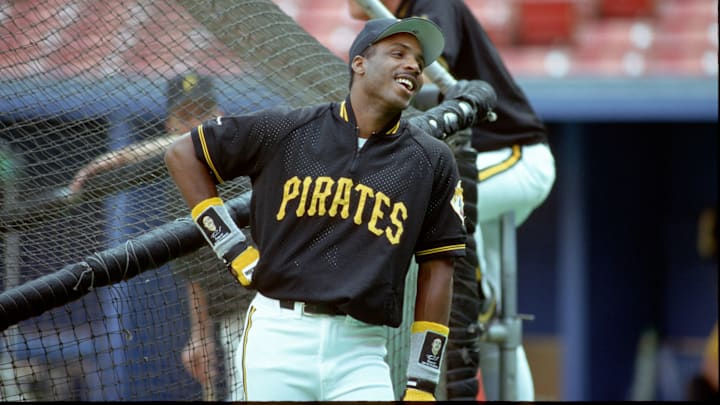On a player’s journey to the majors, there are often many stops along the way before reaching the show. Ahead of making it to the North Shore, Pirates prospects make the rounds through Florida, then Greensboro, nearby Altoona and finally Indianapolis. Some teams, like the Orioles, have minor league affiliates not far from where the big league club plays. In other cases, such as the Pacific Coast League, the miles add up. This is nothing new, as the logistics of travel in baseball have always complicated things to some extent.
Now, imagine having to play your home games in the Aloha State. This notion may seem ridiculous, but was the norm for a quarter century with the Hawaii Islanders of the PCL, the Pirates' top minor league affiliate from 1983 to 1986. The franchise began play in 1961 and shifted allegiances several times before becoming a Pirates farm club. They were very popular in their early days, though attendance gradually declined. As you’d expect, many notable players emerged from the program in these years. Barry Bonds might just be the best of them. Hawaii wasn’t totally unfamiliar to him, though.
At Arizona State, he faced the Rainbow Warriors on their home turf in Honolulu. His stint with the Islanders was excellent, albeit short. In 44 games, Bonds hit .311 and had an OPS of .963. The team on the whole wasn’t as successful, finishing fourth in the South Division that year. In his 22-year major league career, Bonds never returned to the minors after getting the call from Hawaii.
Pirates' history with Hawaii Islanders of Pacific Coast League
Before he became the Pirates skipper, Chuck Tanner managed the Islanders for two seasons, from 1969 to 1970 when they were affiliated with the California Angels. They won a league-leading 98 games in 1970, but fell to the Spokane Indians in the championship. That team included a 42-year-old Roy Face and future All-Star closer Dave LaRoche, father of future Pirates Adam and Andy.
General manager Harding Peterson signed Rick Reuschel to a one-year contract with the Islanders in 1985 after a rough season with the Cubs. Reuschel was great in Hawaii, going 6-2 with a 2.50 ERA before returning to the majors that May. He was one of the lone bright spots for the Pirates that season, making 31 appearances and 26 starts, with a 14-8 record and ERA of 2.26 (good for 6.2 bWAR). Still, Pittsburgh lost over 100 games that year and wouldn’t be relevant again for another half-decade. Reuschel was one of their best pitchers in this span. He was an All-Star in 1987, and was later dealt to San Francisco that August.
Longtime Pirates broadcaster and former player Bob Walk also got the opportunity to pitch at Aloha Stadium. He was with the Islanders for two seasons, 1984 and 1985. A strong member of their rotation, Walk had an ERA under 3.00 between his 42 starts for the club. They made it to the PCL championship in ‘84 under manager Tommy Sandt, but lost to the Edmonton Trappers, then the Angel’s Triple-A team. Walk won 16 games for Hawaii in ‘85 and became a regular fixture in the Pirates’ bullpen and rotation from then on.
The Islanders had a unique arrangement with the other teams in the league that called for long home stands to cut down on costs. Being well over 2,000 miles away from their nearest opponent made this a necessity. It’s hard to imagine that everyone loved playing there. They shared three different stadiums throughout their history with the local college team. One of their program’s all-time greats, Derek Tatsuno, pitched for the Islanders, to less than stellar results, from 1986 to 1987.
Besides Bonds, Tony Gwynn is another legend of the game who played for the Islanders. He spent a majority of the 1982 season with them before being promoted to San Diego. Gwynn, one of the best pure hitters of all time, hit .328 in his 93 games with Hawaii. Bobby Valentine, who’s best remembered as a manager, also had a great year with the Padres’ Triple-A team before getting the call in 1976. He hit .308 with 13 home runs and 89 RBI in 120 games, one of the best seasons of his professional career at any level. Hall of Fame pitcher Bob Lemon also managed the Islanders in 1964 when they were an Angels affiliate and stuck with the organization when they moved their top farm club to Seattle.
The Pirates followed the course of their predecessors and left Hawaii after the 1986 season, as the Vancouver Canadians, then a member of the PCL, shifted their affiliation to Pittsburgh. The White Sox would then take over, and saw their top prospects play the final season in Islanders history in ‘87 before becoming the Colorado Springs Sky Sox in ‘88. After the Islanders folded, there was a winter league based in Hawaii associated with MLB that lasted until the late 2000s.
Of course, the University of Hawai’i at Mānoa’s baseball team is still around, playing at Les Murakami Stadium in Honolulu. The program has turned out some serious talent, most notably Kolten Wong, with Josh Rojas and Cade Smith playing in the majors today. While it remains unlikely that another minor league team will make it back to the Aloha State, the first go-around wasn’t without its merits, considering the challenges presented.
For some recent Pirates who hail from Hawaii, it’d surely be a dream to play there. Isiah Kiner-Falefa won a state championship at the Mid Pacific Institute before getting drafted by the Rangers. Former Pirates outfielder Ka’ai Tom went to the Saint Louis School in Honolulu and was teammates with Marcus Mariota on the gridiron. Looking back, though just for four seasons, the Pirates' tenure with the Islanders was a memorable and special chapter in the franchise’s 125+ year history.
